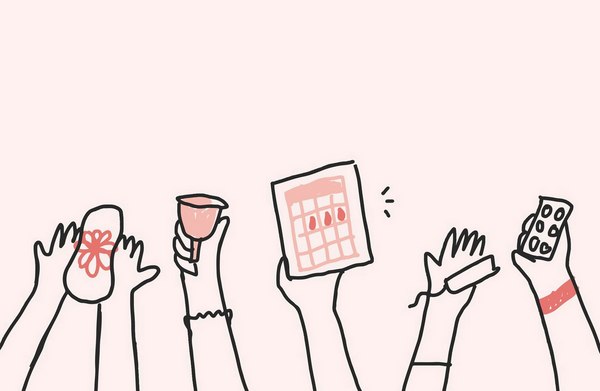
From Sponges to Tampons: The Evolution of Menstrual Products
In this blog, we're diving into the past to see what women used hundreds, or even thousands of years ago. Trust me, by the time you finish reading this, you’ll be thankful to be a woman of the 21st century 🙏.
____________________________________________________________________________________________________
Ancient Times 🏛️
Ancient Greece 🇬🇷

In ancient civilizations, options were limited when it came to menstrual products and women had to make do with what was available (which often wasn’t much). In Ancient Greece, homemade pads were the items of choice and were made of cloth or even natural sea sponge 🧽.
Ancient Egypt 🇪🇬

The ancient Egyptians are known to be the first people to use papyrus 🌿 - a material made from the stem of a water plant used to create sheets for paper, baskets 🧺, mats, sandals and rope. It's believed women used softened papyrus to make a tampon-shaped device and would wrap linen or cloth around it for absorption.
The Medieval Era/ Dark Ages 🌑

The Victorian Era 🏰
This was one of the first commercial products on the market, with these aprons being made of thick, dark-colored material and worn under clothes to prevent stains. They were the go-to option until the 1920s.

In 1896, the sanitary belt was invented - the precursor to modern-day pads. It was the first mass produced, disposable sanitary solution, where towels could be clipped onto the belt and disposed of afterwards.

The 20th Century: A Time of Innovation 🚀
Applicators
In 1929 Dr Earle C. Haas invented the tampon applicator after learning that a friend used a small sponge 🧽 during her period instead of bulky pads. He wanted to create a better option for women. This innovation made tampon use more comfortable for women who were previously uneasy about manually inserting tampons and was particularly popular throughout the USA.
Menstrual Cups

Tampons without an applicator
In 1950, applicator-free tampons became popular across Europe and Australia as they were smaller and slipped more discreetly into women’s purses 👛.
Adhesive Pads
The 1970's brought a game-changing innovation: adhesive strips on pads. These could be easily stuck to underwear and discarded when done 🗑️.
Women loved the belt-free option, and by the 1980s, belted sanitary napkins were pretty much history.
Scented Pads
In the 1990s, pads got even better with the introduction of absorbent gels for more comfort and hygiene. These were marketed as a safer alternative to tampons, especially since there was a rise in Toxic Shock Syndrome (TSS) ⚠️ during the 1980s due to super absorbent tampons.
All-Natural Cotton
By the 1990s, there were lots of products on the market, but the aisles were full of synthetic options, and let’s be real—they weren’t exactly eco-friendly or gentle on the skin.
Enter Cottons! 🎉

Think soft, breathable, and chemical-free 🌱—perfect for anyone looking for a natural alternative that’s kinder to the body. Our mission? To support every woman, every cycle, with products that are high-quality, affordable, and completely natural 💖.
____________________________________________________________________________________________________
And here we are today, with more options than ever 💫—from disposable pads and tampons to menstrual cups and many more. Yep, we should all be grateful to be women of the 21st century.




